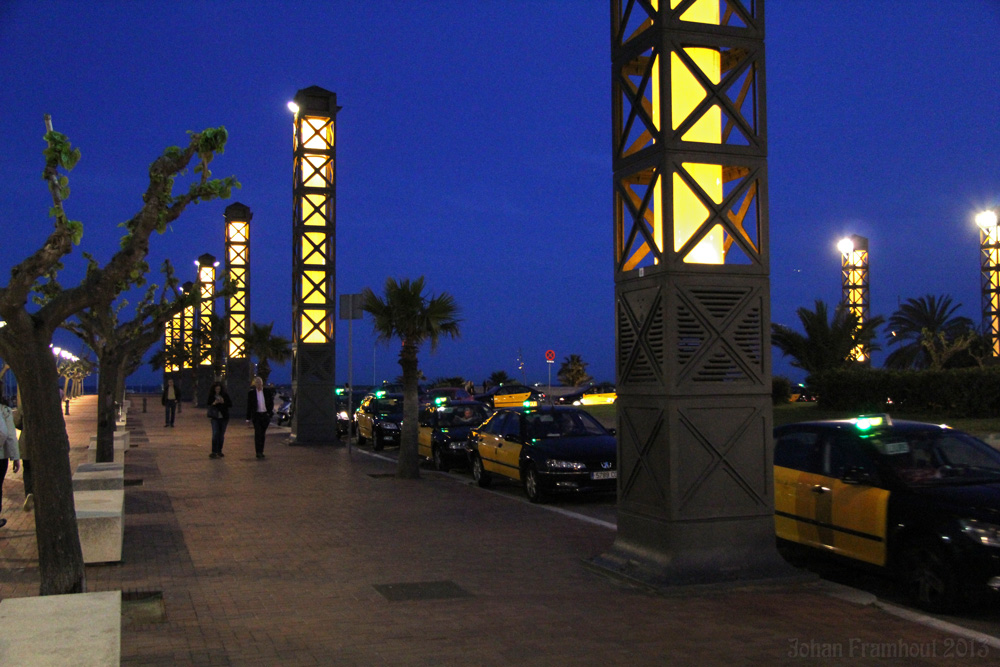
Photos of Barcelona 2013 - page 4
Parc de la Ciutadella & Arc de Triomf
Beginning 18th century Barcelona was an economically flourishing place resisting lingtime the mercenaries of Filips V.
After their defeat the Spanish king let demolish all houses of the Ribera, more then thousand houses,
to build a fortress to rule more easely over the Catalans.
After the liberal revolution of 1868 the Catalaanse nationalists succeeded to let demolishing this symbol of supression.
In the place came a park where later the first world exhibition would take place, in 1888.

Half of the Parc de la Ciutadella is now a zoo, but the other half is worth visiting,
especially this brilliant fountains, in which Gaudi participated during his years of study.

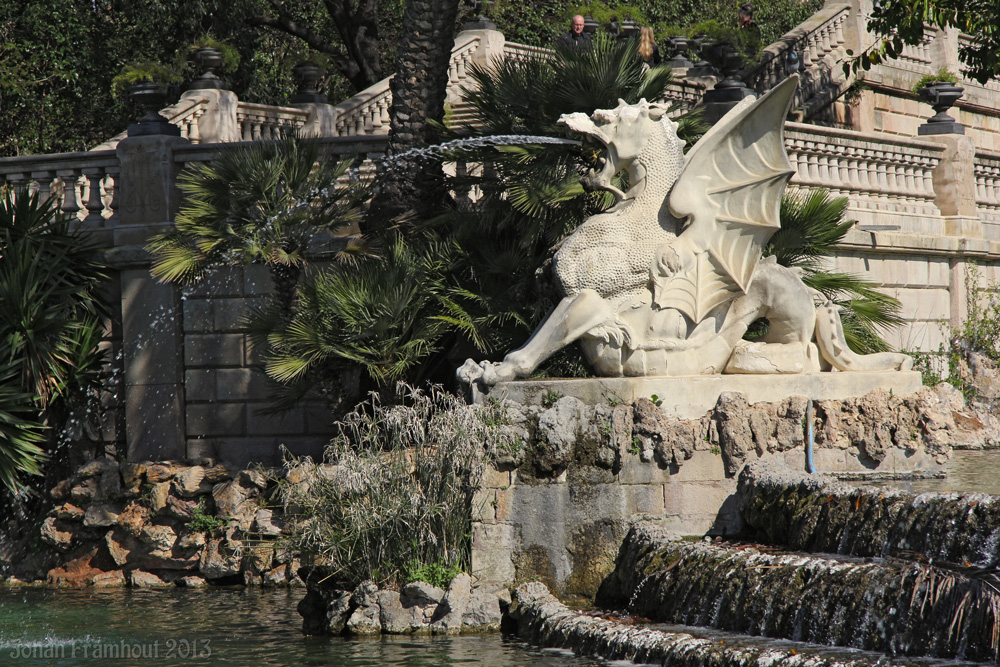


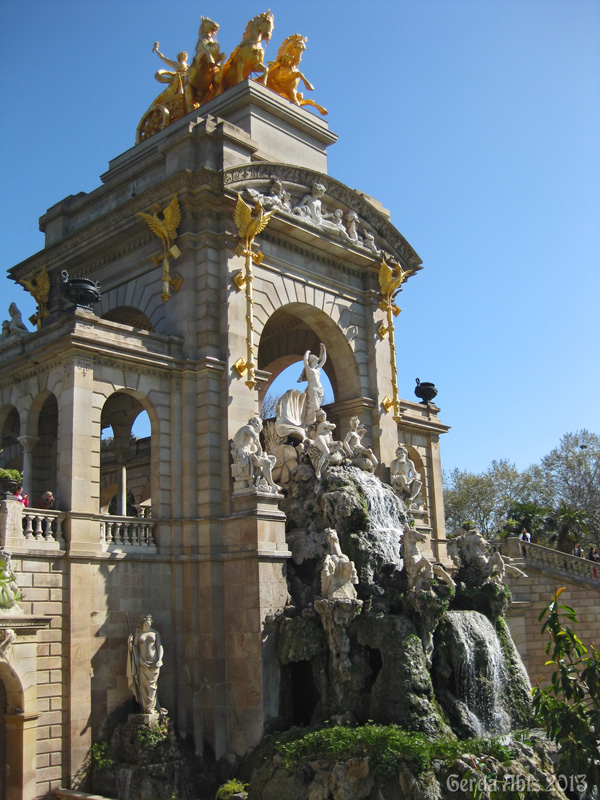
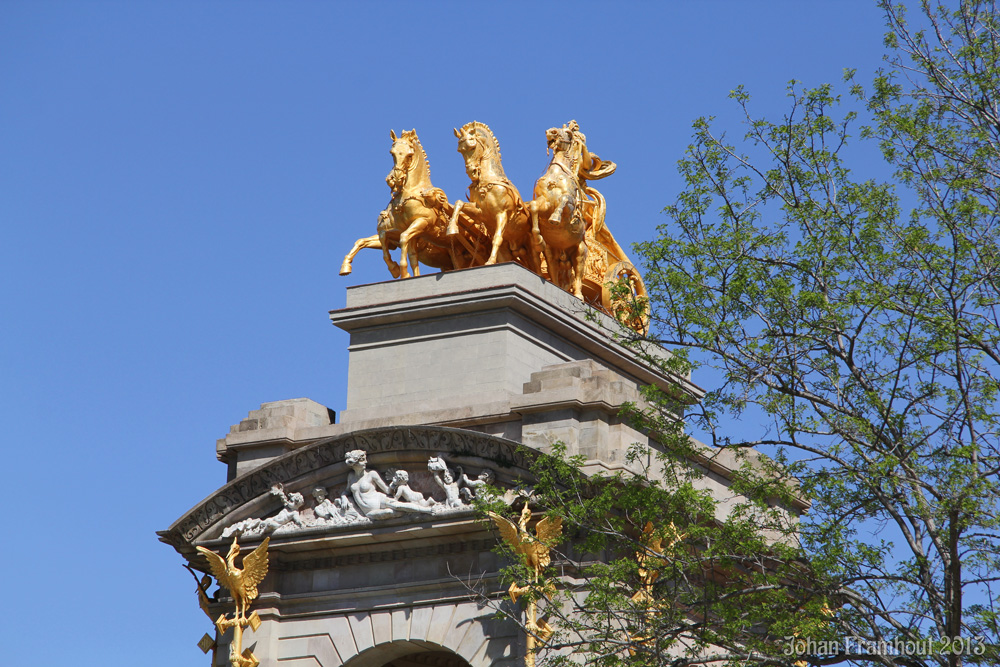
Parc de la Ciutadella, an art piece with on the back the Castell dels Tres Dragons by Domènech i Montaner,
build in 1887 to serve as a restaurant for the world exhibition, in those days a revolutionary design.
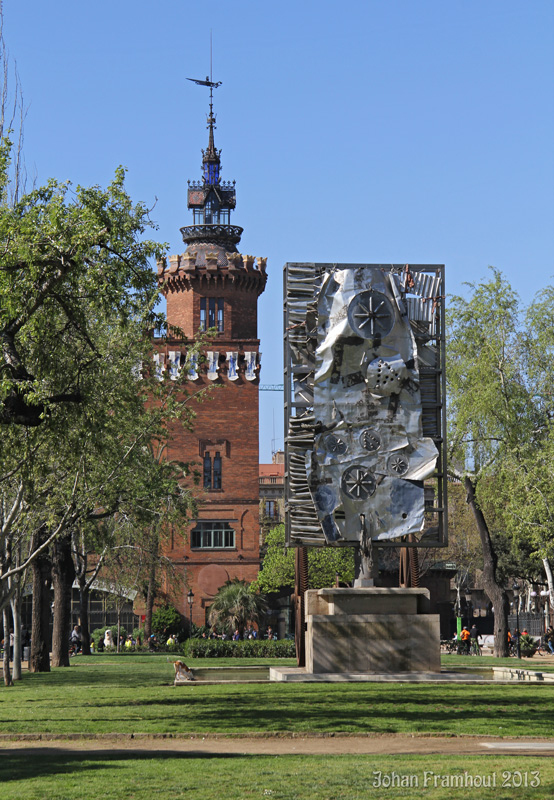
Parc de la Ciutadella, vandalism immortalized
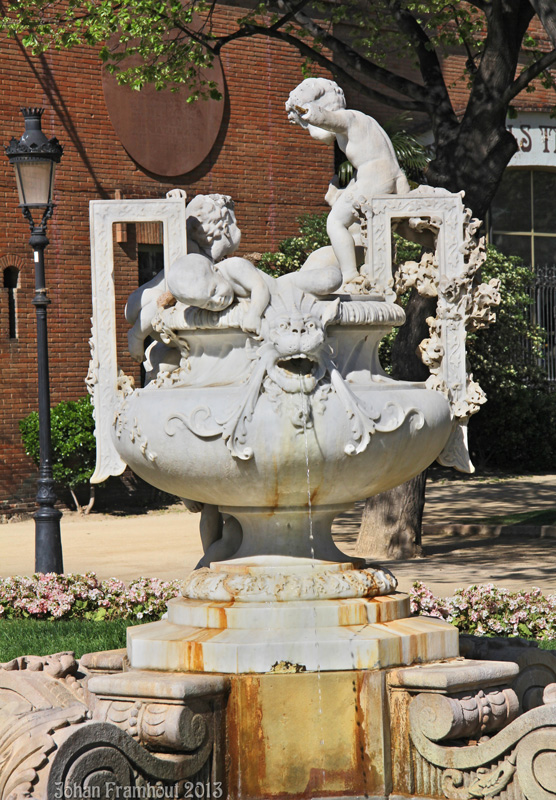
The Passeig Lluis Companys brings one from the Parc de la Ciutadella to the Arc de Triomf,
with two rows of very special lanterns.
In 1888 this was the entrance of the world exhibition.
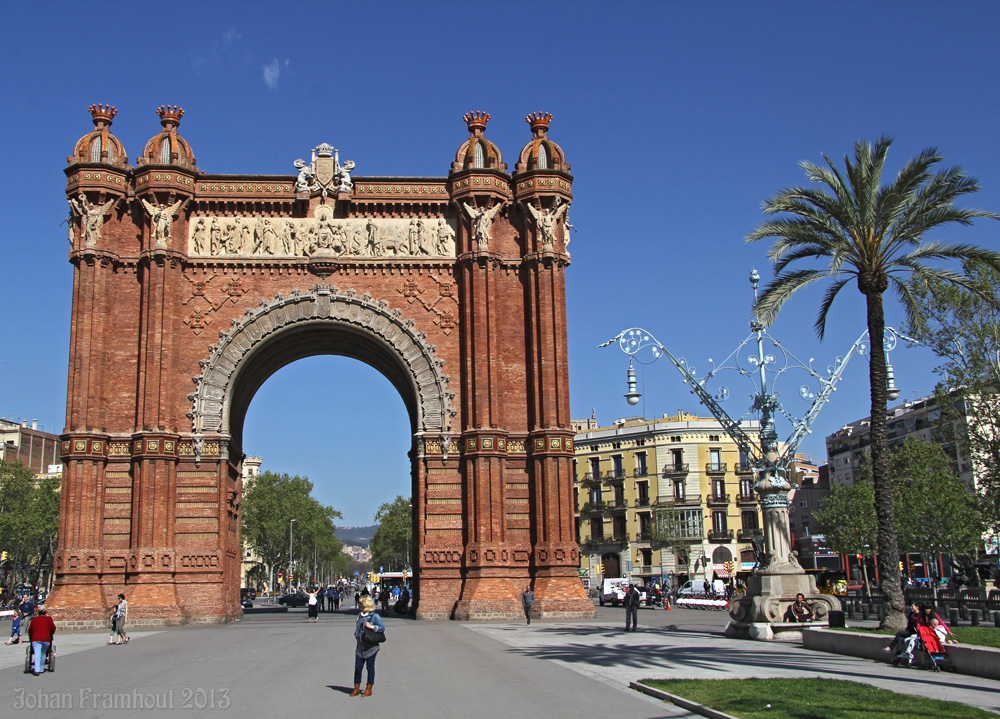
Montjuic
Montjuic, the Jewish moutain. This slope, with stairs and even with escalators, was build in 1929 for the second world exhibition in Barcelona.
The buildings are designed by the French architect Forestier, with cooperation of Nicolau Rubio.
Although this architecture is post Gaudi, this example of neo-classicism shows little renewal, but nevertheless it is a very beautiful complex.
In the central building is now the Museu Nacional de Catalunya.
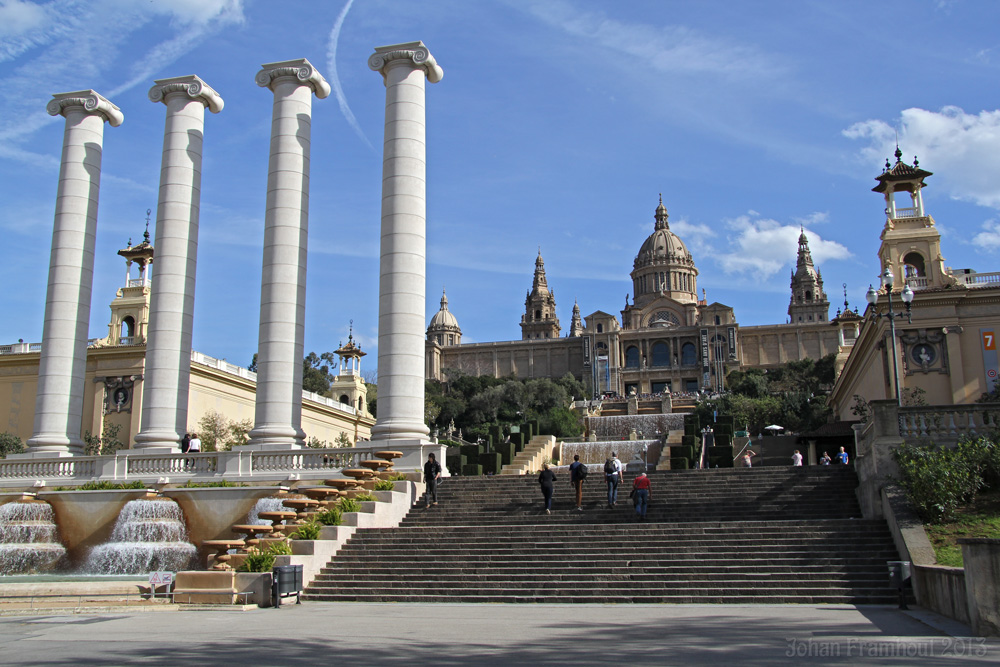

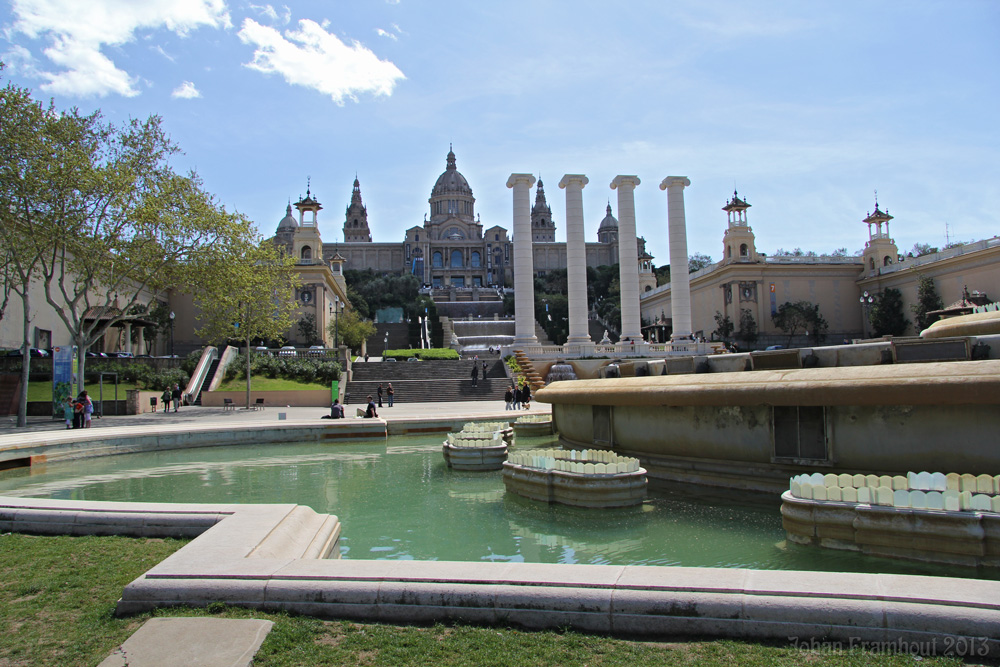

Montjuic, view on the access road, on the right one of the two Barcelona bullrings.
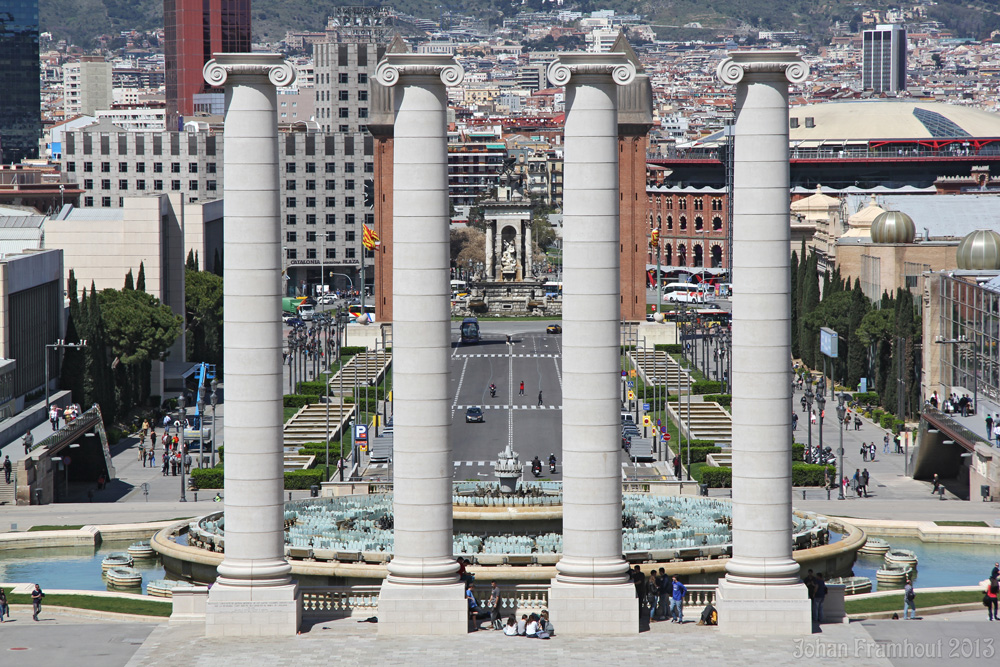
Montjuic, Fundacio Miro, on the roof
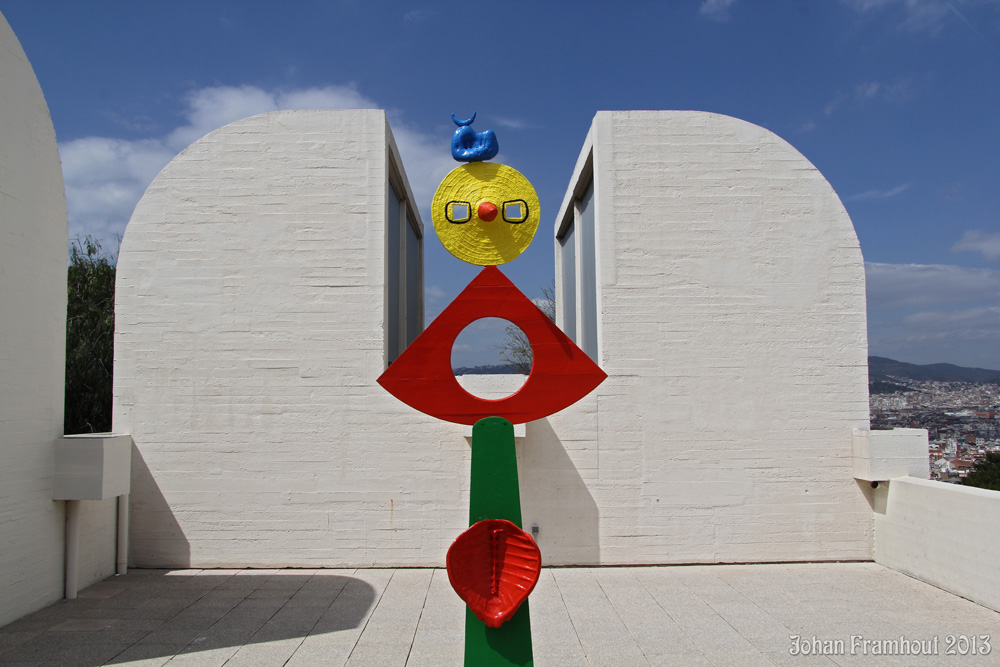
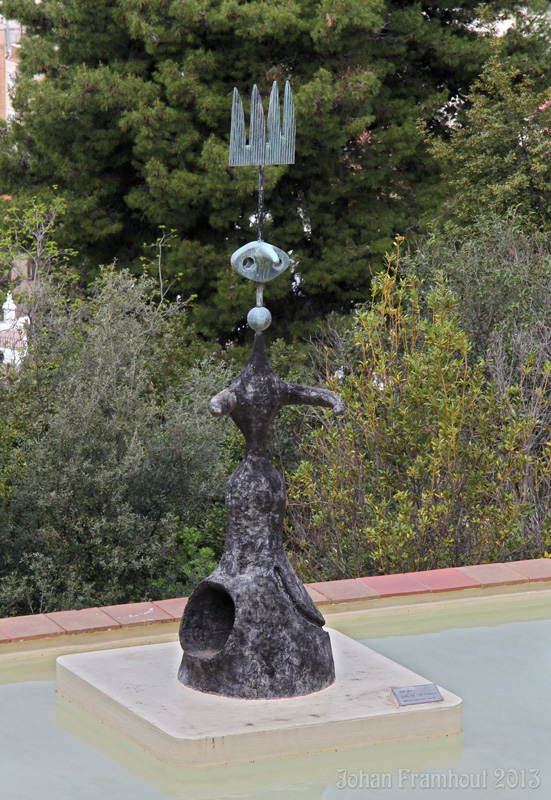
Poble Espagnyol (Montjuic)
Spanish village build for the world exhibition.
The houses were build in the traditional style of the different regions of Spain.
Plaza Major, the building on the left is in the style of Aragon.
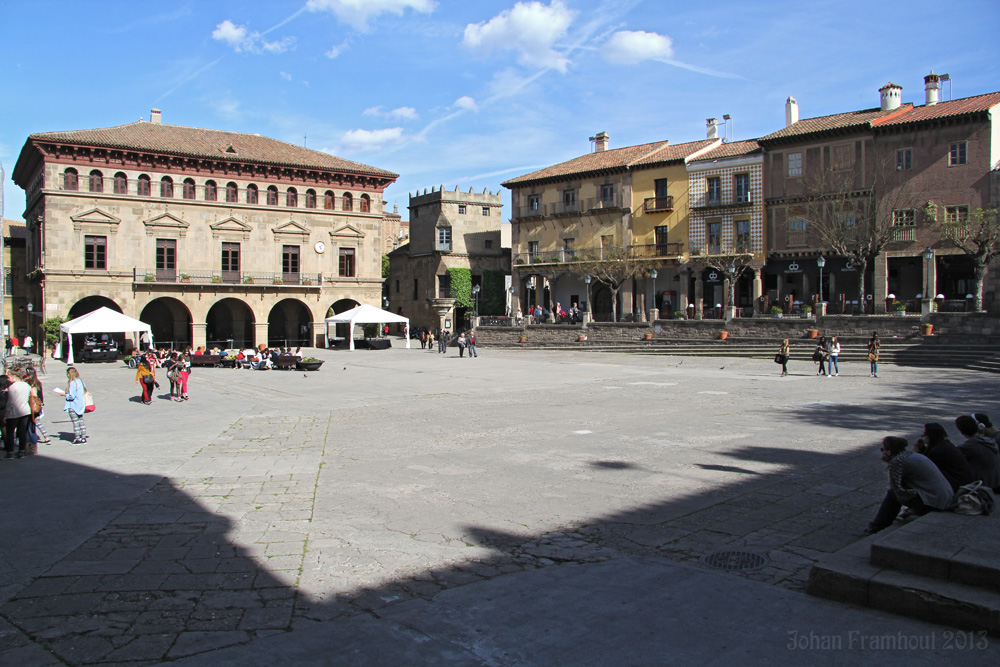

Poble Espagnyol, Montjuic, Plazuela de la Iglesia
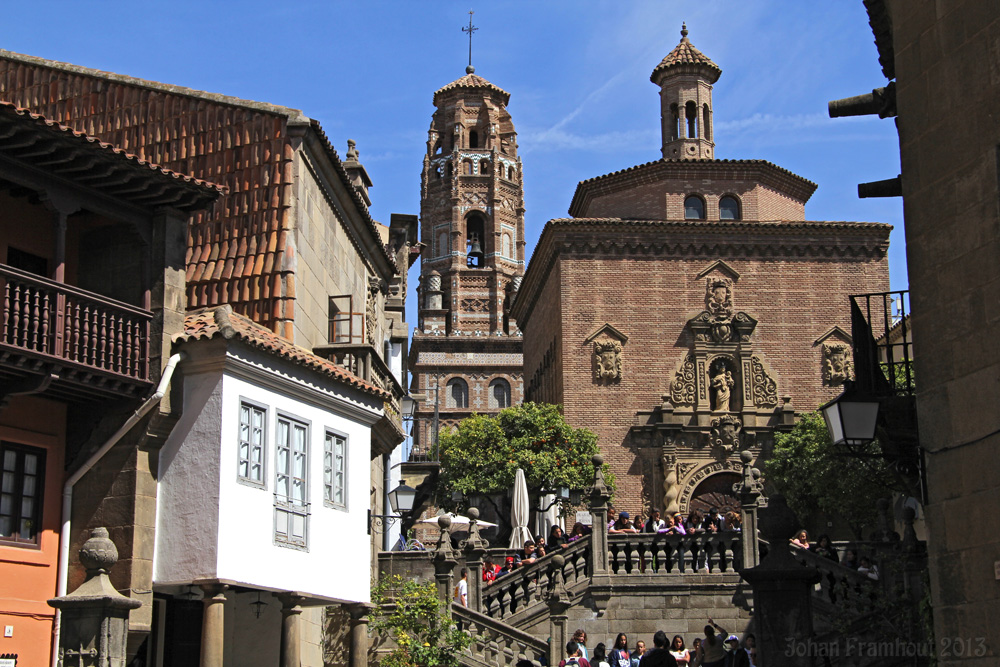
Poble Espagnyol, Montjuic, ceramics gallery

Poble Espagnyol, Montjuic, Cuna Arcos, style from Andalucia

Museum of the Fundacio Fran Daurel in the Spanish village.
We did found this museum much more interesting then that of Miro!
It's not allowed to take photos, this is the only photo because this piece of art is outside the museum.
There is a website, but the images there are very small.

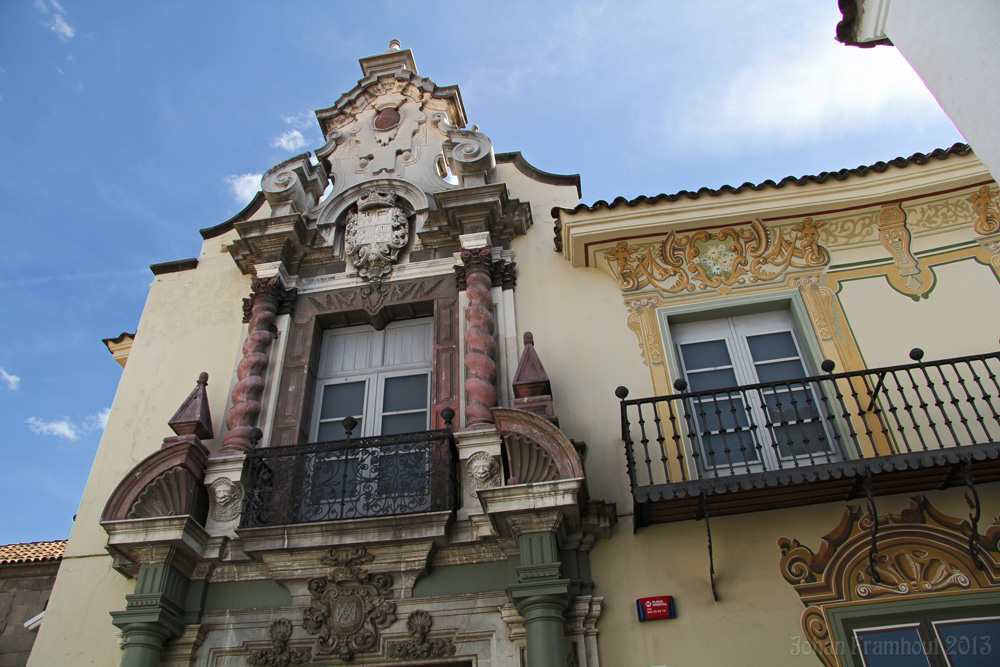
Poble Espagnyol, Montjuic, glassworks

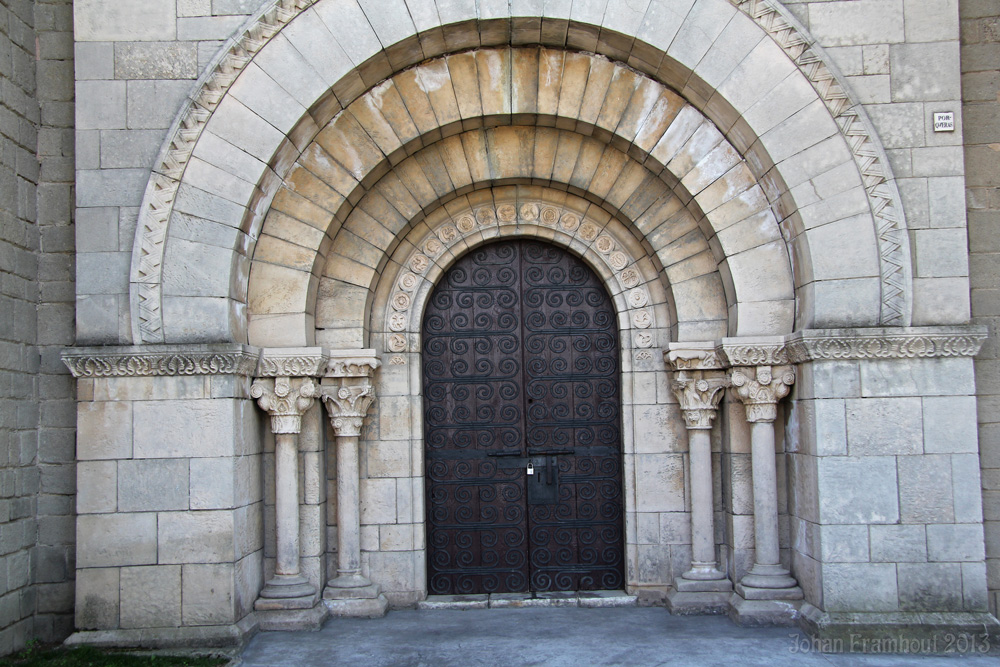
Poble Espagnyol, Montjuic, C. Mercaders, style from Catalunya
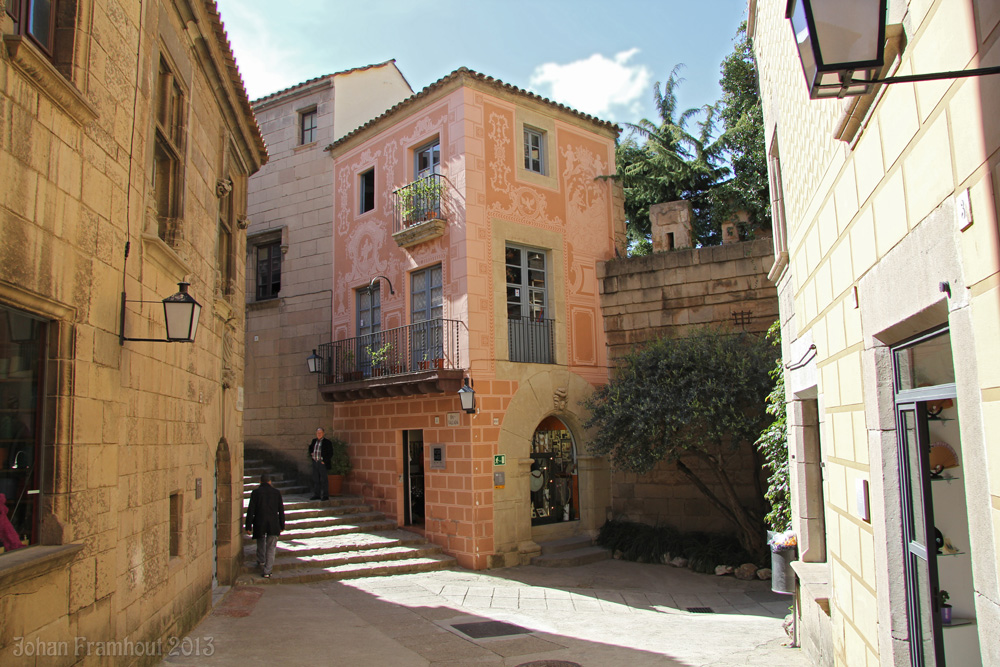
Poble Espagnyol, Montjuic, C. Principe de Viana, style from Galicia

The coast
The popular geant gamba
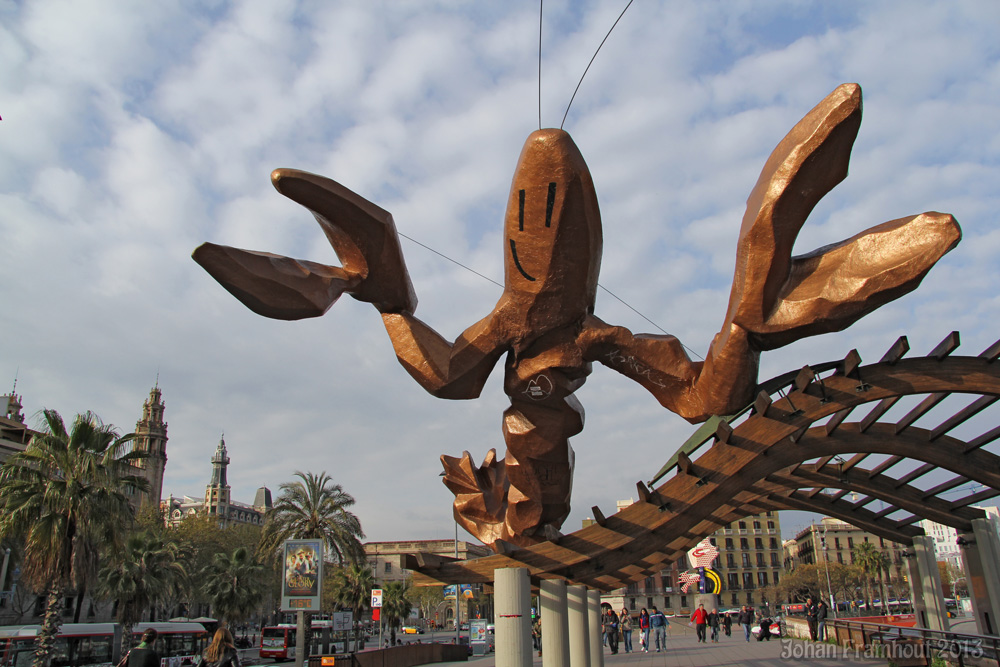
Christoffel Colombus, pointing to his goal: to reach India by sailing around the world in opposite direction.
His failure resulted in a discovery, which made him famous and loved.
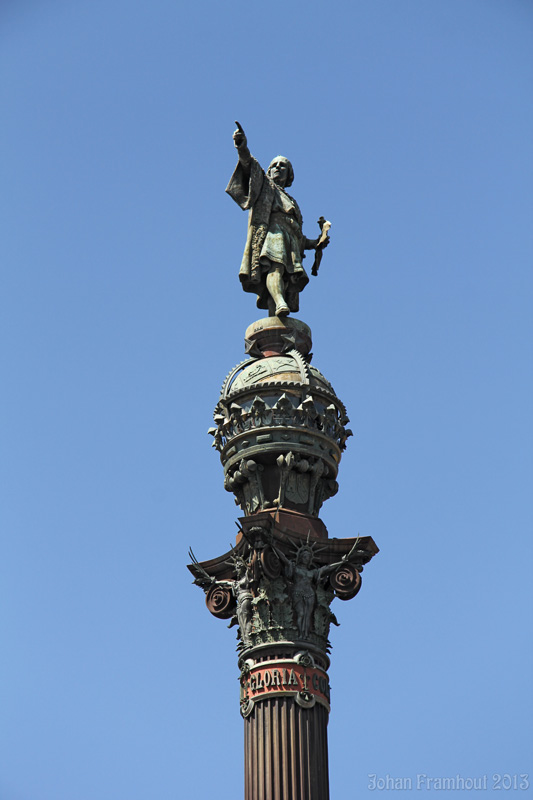
The harbour building
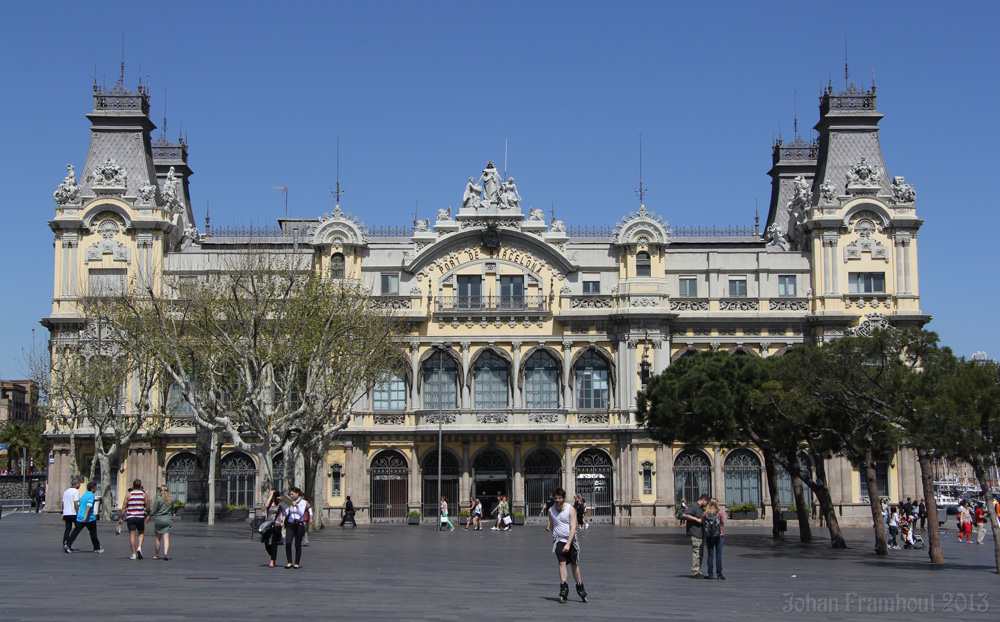

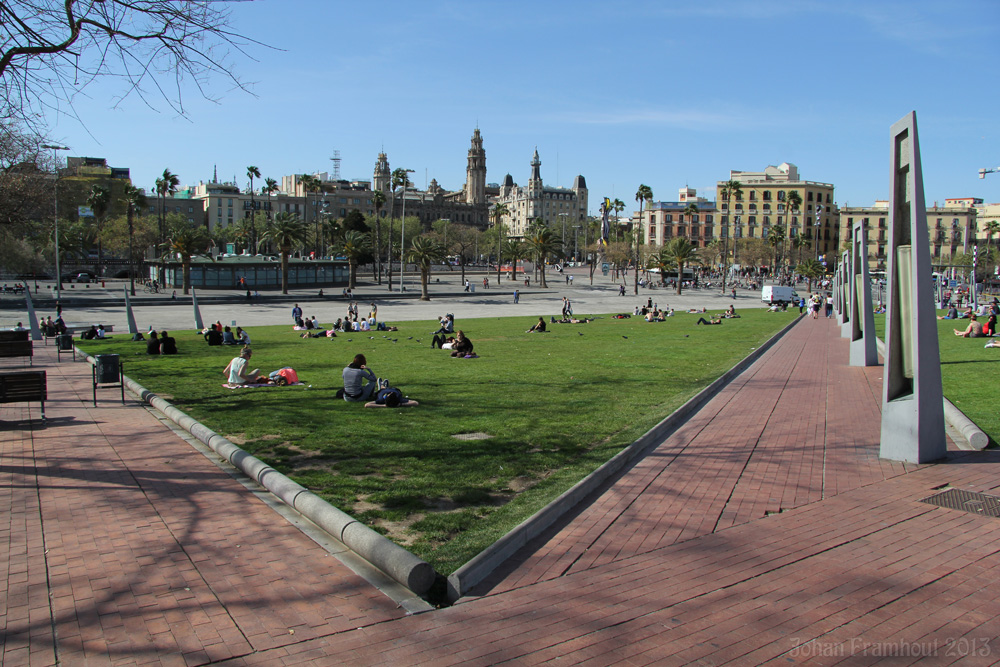
Visit to the aquarium


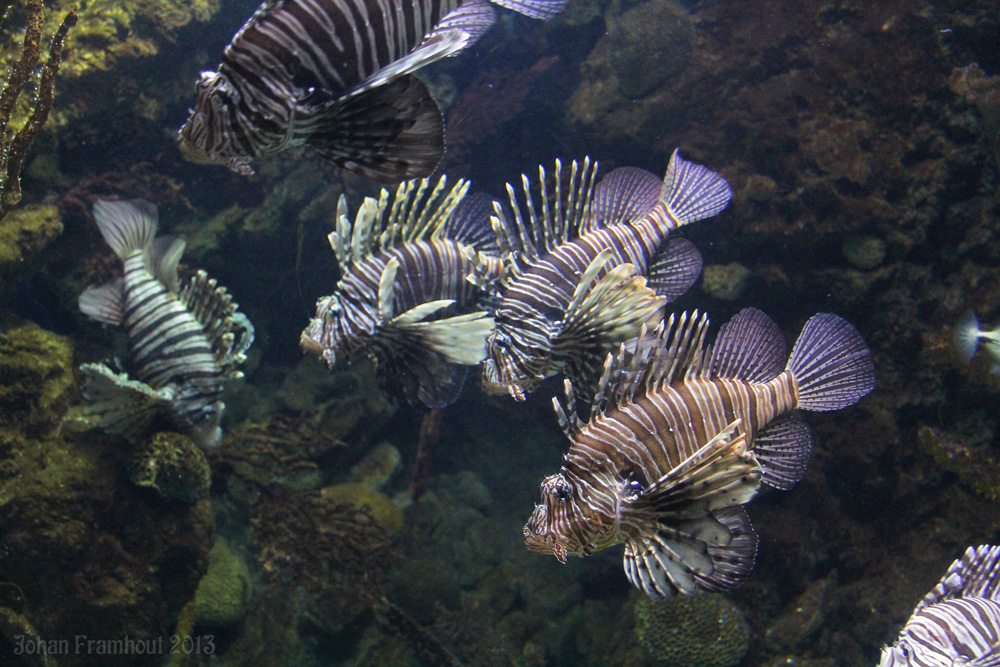
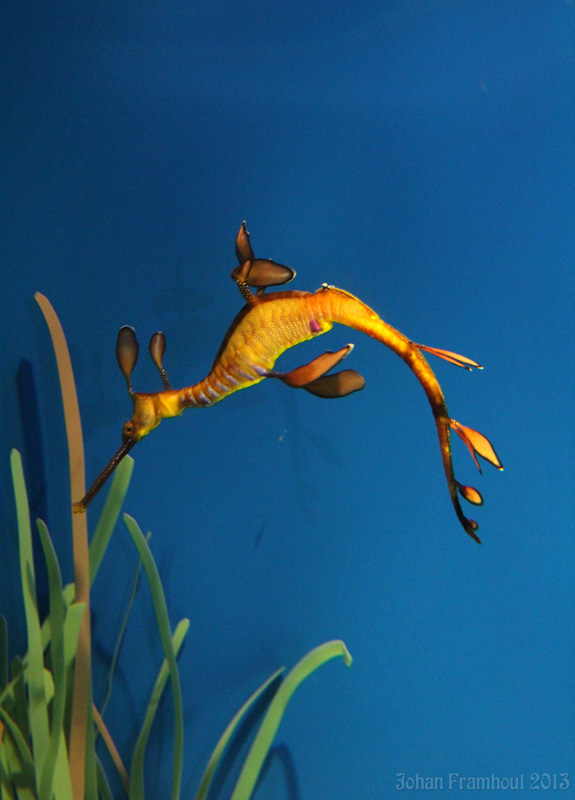
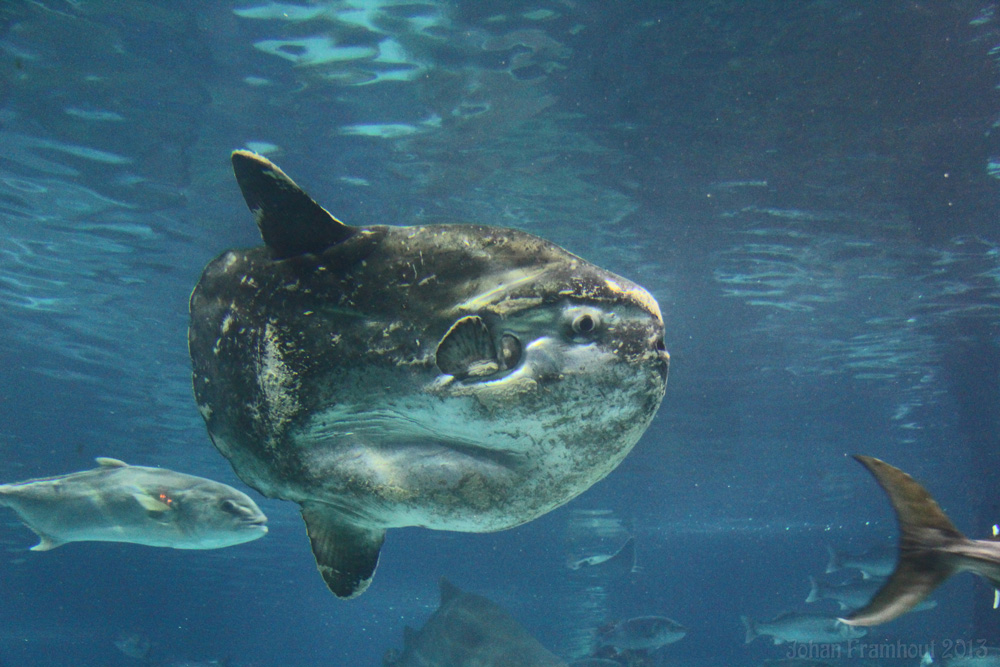
Usually solar panels cause an esthetic disaster, but in Barcelona
we found more then one nice use of this energy source.
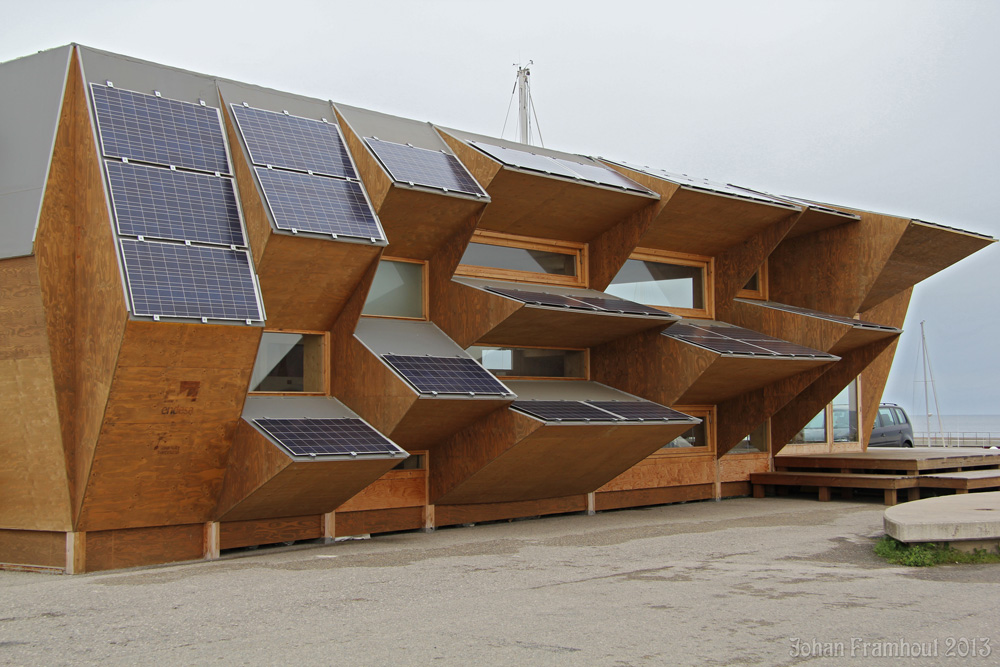
Sunset, with the two high towers which are the most important orientation points of Barcelona.


Sunset, with the typical lanterns and taxis
